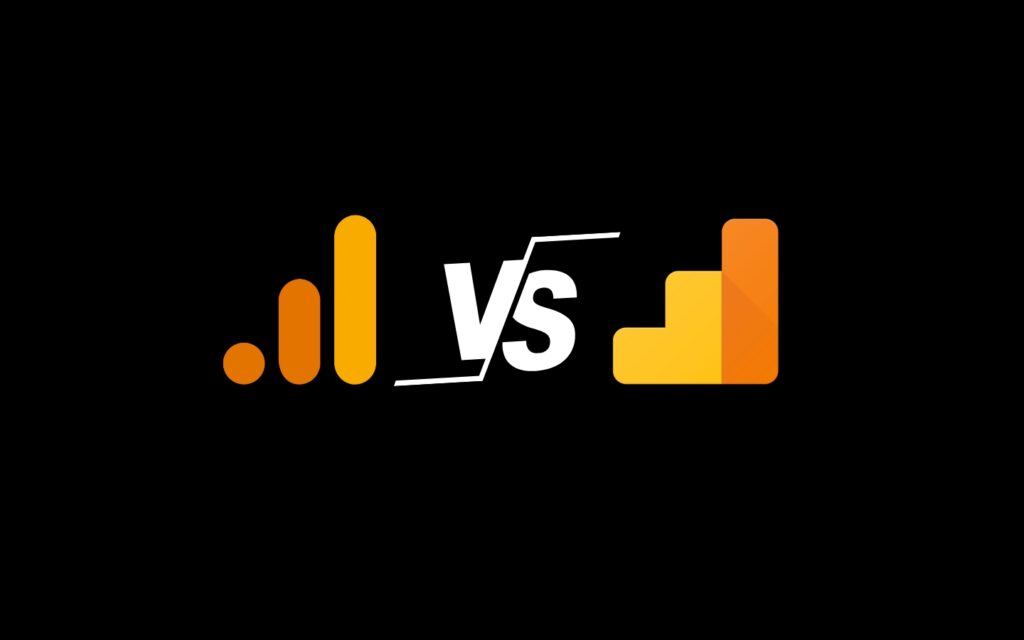You will often hear Conversion Rates being referenced as a Key Performance Indicator (KPI) when reviewing the effectiveness of an e-commerce or lead generation website. In this article we’ll explain a little more about Conversion rates; how they form one of the three main variables that affect how much money you are taking through your website, why they are a good indication to your overall website’s health and give you some benchmark figures to compare your own to.
Let’s keep things simple to start with! A conversion rate refers to the percentage of website visitors who take a desired action, such as making a purchase, filling out a contact form, or signing up for a newsletter. Essentially, it measures how well your website is doing at converting visitors into customers or leads.
For example, if your website gets 1,000 visitors in a month and 100 of them make a purchase, your conversion rate is 10% (100/1,000) – thats a pretty great conversion rate FYI (but we’ll come to comparing rates later).
Conversion rates are important because they can give you insights into the effectiveness of your marketing efforts and website design.
Conversion rates though important are just one of the three main variables that impact how much money you are taking through your website in sales (your Total Sales Value). As such it’s important to look at these other variables when considering and comparing your conversion rates on site.
Three Variables That Affect Your Total Sales Value
Total Sales Value or Gross Merchandise Value (GMV) is simply a metric that measures your total value of sales over a certain period of time:
Gross Merchandise Value =
Sales Price of Goods x Number of Goods Sold
There are three main variables that impact this figure:
- The number of sessions to your website
- The percentage of these sessions that are converted into a sale (Conversion Rate)
- The value of each of these conversions (Average Order Value)
We’ve created a simply calculator to enable you to see the impact these variables have on your Total Sales Value.
Have a play around with sliders or put your own figures in and click Calculate to see how they impact your Total Sales Value.
Conversion Calculator
How To Positively Impact These Three Key Variables
Taking each of these variables in turn we’ve provided some broad examples of actions that can be taken to positively impact these figures:
Impacts On Total Number Of Sessions:
- Search Engine Optimisation (SEO): Improving the website’s visibility on search engines like Google by optimising keywords, meta tags, and other on-page elements.
- Pay-per-click (PPC) Advertising: Running targeted ads on search engines or social media platforms to drive traffic to the website.
- Social Media Marketing: Promoting the website through social media channels like Facebook, Instagram, or Twitter to drive traffic to the website.
- Content Marketing: Creating valuable and informative content that attracts users to the website.
- Email Marketing: Sending targeted and personalized emails to subscribers to drive traffic and conversions.
- Referral Programs: Offering incentives for customers to refer their friends and family to the website.
Impacts On Conversion Rate:
- User Experience (UX): Ensuring that the website is easy to navigate, loads quickly, and is visually appealing.
- Website Design: Creating a visually attractive and easy-to-use website that is optimised for conversions.
- Product Pages: Providing detailed and accurate product descriptions, images, and customer reviews to help users make informed purchase decisions.
- Checkout Process: Simplifying the checkout process and offering multiple payment options.
- Trust and Security: Displaying trust signals such as SSL certificates, security badges, and customer reviews to build trust with users.
Impacts On Average Order Value:
- Cross-selling and Upselling: Recommending related or complementary products to customers to increase the total value of their purchase.
- Discounts and Promotions: Offering discounts or promotions for larger purchases to encourage customers to increase their order value.
- Product Bundles: Creating product bundles that offer a discount when multiple items are purchased together.
- Loyalty Programs: Offering incentives for customers to return and make additional purchases.
- Personalised Recommendations: Using customer data to provide personalised product recommendations based on their purchase history and preferences.
Conversion Funnels, What To Look For
It’s useful to keep the idea of a Conversion Funnel at the forefront of your mind when thinking about conversion rates.
What often gets overlooked beyond the overall Sales/Enquiry Conversion Rate at the bottom of the funnel are the Conversion Rates further up; for instance, ‘Conversion to Product Page Views’ which can provide a useful bench mark when assessing site improvements.
At each point in the conversion funnel ask yourself what the potential reasons a user dropped out, maybe the product page description isn’t detailed enough, or your lacking customer reviews on a product page for instance. Address these potential issues and review your conversions rates following these amends to see what impact they are having.
The likes of Hotjar who provide experience insights and behaviour analytics including heatmaps, recordings and user surveys can really help with this process of identifying site improvements.
So What Is A ‘Good’ Conversion Rate?
Conversion rates vary across devices and marketing channels. This can be for a variety of reasons but broadly speaking the variations in figures by device are often down to ease of use, User Experience (UX). Where as conversions rate variation by Channel is more to do with intent.
So what’s would we consider a good conversion rate overall? A good conversion rate is typically between 2.5% and 3.5%. But if your conversion rate goes beyond 4% or even 5%, that’s truly exceptional! On the other hand, if your conversion rate is around 1%, it may not be performing as well.
The important takeaway here is to strive for a conversion rate as close to 5% as possible.
Average Conversion Rate By Device (UK)*:
| Device | Q2 2021 | Q3 2021 | Q4 2021 | Q1 2022 | Q2 2022 |
|---|---|---|---|---|---|
| Tablet (UK) | 5% | 5% | 5% | 4% | 4% |
| Mobile Phone (UK) | 3% | 4% | 4% | 3% | 4% |
| Desktop (UK) | 7% | 7% | 6% | 5% | 5% |
Average Conversion Rate By Channel (UK, US, EU)*:
| Source | Q2 2021 | Q3 2021 | Q4 2021 | Q1 2022 | Q2 2022 |
|---|---|---|---|---|---|
| Direct | 3% | 3% | 3% | 2% | 2% |
| Social | 1% | 1% | 1% | 1% | 1% |
| 2% | 2% | 2% | 2% | 2% | |
| Search | 3% | 3% | 3% | 3% | 3% |
*These conversion rates are compiled from Kibo’s e-commerce Quarterly report from Q2 2022. We will update these figures periodically on publication of further more recent reports. Kibo’s benchmark conversion data is sourced from large e-commerce brands in the US, GB, and EMEA.

